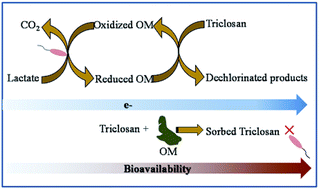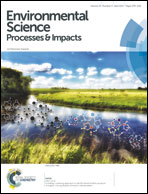Emerging investigator series: dual role of organic matter in the anaerobic degradation of triclosan†
Abstract
Triclosan (TCS), one of the most widely used antimicrobial agents, has been listed among the top 10 contaminants in US rivers. Environmental persistence, endocrine disruption effects, and the antibiotic resistance induction capacity of TCS attract interest in its environmental fate and degradation. Herein, we found that TCS can be anaerobically degraded at pH 9 by a metal-reducing bacterium, Shewanella putrefaciens CN32. The degradation was substantially facilitated by low-concentration (0–15 mg C per L) organic matter (OM) extracted from a peat soil, whereas TCS degradation was inhibited by further increased concentration (15–100 mg C per L) of OM. OM acted as both an electron shuttle and sorbent in regulating the degradation of TCS. The novel dual role of ubiquitous OM in the reaction of TCS governs the environmental degradation and persistence of TCS. Our study highlights the effects of OM on the reaction of emerging trace organic pollutants, with implications on their engineering treatment and environmental risk regulation.

- This article is part of the themed collections: Emerging Investigator Series and Natural Organic Matter


 Please wait while we load your content...
Please wait while we load your content...